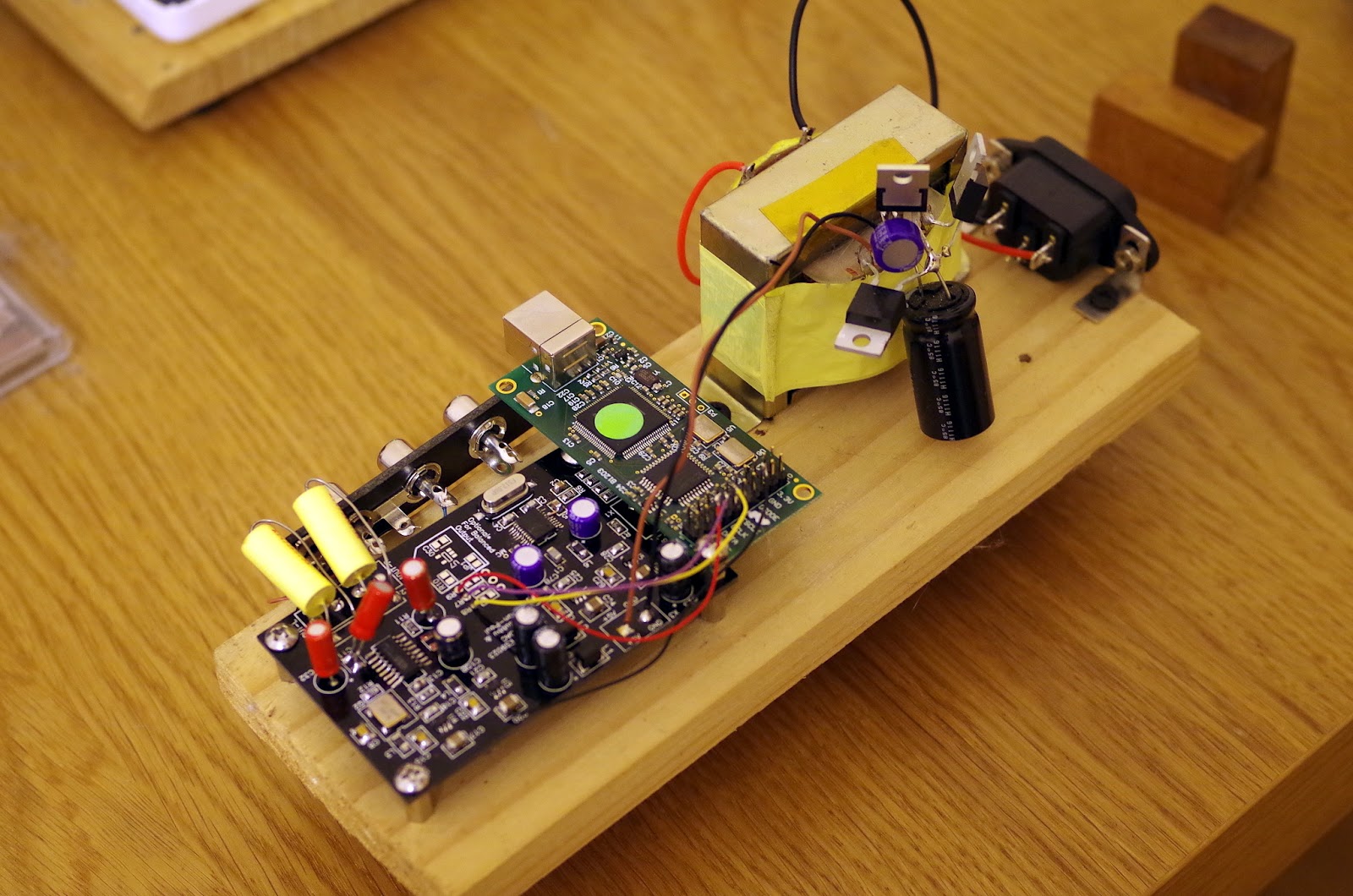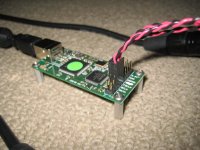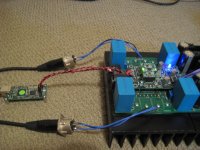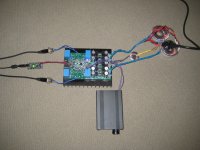what about the IIR bandwidth? there is different settings in the IIR for PCM and DSD, this will not be switched with your method
Was that question directed at me?
I think at me.
But as I don't know what is actually set by the new header on the Buffalo III SE it is difficult to say if qusp is right or wrong.
But as I don't know what is actually set by the new header on the Buffalo III SE it is difficult to say if qusp is right or wrong.
i need help, i connected the amanero card to pcm1794a, am i connect it right?
An externally hosted image should be here but it was not working when we last tested it.
yes, see belowmerlin el mago said:Was that question directed at me?
NicMac said:I think at me.
But as I don't know what is actually set by the new header on the Buffalo III SE it is difficult to say if qusp is right or wrong.
no, it was indeed for merlin el mago, because he was saying he is just using sidecar to switch between i2s and DSD and this is not always the complete switch procedure. When changing from PCM to DSD on ESS dacs, you also should consider changing the IIR bandwidth filter, because the setup for the filters is completely different. the input connection may work, but its not really set for DSD simply by changing the source.
I had actually taken it as essential but I guess the default PCM values for the filter work, but are just not really ideal. I dont use BIII as you know so checked the guide for you, see below.
IIR Bandwidth
The default setting ‘Normal’ should give the best performance when using PCM (least in-bound ripple). When using DSD you may want to try higher values.
SW2:6
SW2:7
Normal (for PCM) OFF OFF
50k (for DSD) OFF ON
60k (for DSD) ON OFF
70k (for DSD) ON ON
so adjust to taste
Last edited:
yes, your diagram is correct. for some annoying reason the manufacturers still do not all comply to a standard naming. for the PCM179X series and some other dacs SCK is MCLK and the S is for System Clock, not Sample Clock as it can sometimes mean, which is the same as BCK.i need help, i connected the amanero card to pcm1794a, am i connect it right?
thanks for the reply.
but no sound come out, i am thinking, the pin 7 put high is dsd on, should i connect it to pin 8"gnd" to make it 0v?
but no sound come out, i am thinking, the pin 7 put high is dsd on, should i connect it to pin 8"gnd" to make it 0v?
Thanks to everyone who has replied about my noise problems. I discovered that one of my CAT5 wires was cut a little when I stripped the wires, so I reterminated, but that didn't change anything.
With my hackintosh home theater pc, I get a constant 4khz noise that is there regardless of sample rate (although I haven't tried DSD yet). My hackintosh runs Lion, and has a Gigabyte H67N-USB3-B3 motherboard.
I pulled the firmware chip, and the noise persisted.
I tried my HP hackintosh laptop using batteries, and the noise disappeared.
I didn't try with the power supply connected to the laptop yet.
Apparently the USB ports on my hackintosh cause a 4khz noise. Any suggestions for how I can fix this noise problem? I would like to use this computer with the Amanero. Would upgrading the computer's power supply (it is just the cheapo one that came with the case), or getting a USB PCI card make a difference? I have thought about rebuilding with an external linear power supply, but that would be a bit down the road.
I still get "crunchy" noises that sound like dropouts. I get them with both the laptop and the PC, and I get them with and without the firmware chip installed in the Buffalo II. I never installed the LED's for lock and mute when I built my Buffalo. I'll have to go back and install them, and order the "best" firmware from TP. Is the default setting when I pull the firmware chip "best"?
Sorry to hijack this thread with my questions about my specific implementation. I think that there are a lot of people who will use this board with a Buffalo II (I have the 80mhz version), so perhaps this will be helpful to more people than just me.
Thanks to everyone for their help and suggestions.
-Aaron.
With my hackintosh home theater pc, I get a constant 4khz noise that is there regardless of sample rate (although I haven't tried DSD yet). My hackintosh runs Lion, and has a Gigabyte H67N-USB3-B3 motherboard.
I pulled the firmware chip, and the noise persisted.
I tried my HP hackintosh laptop using batteries, and the noise disappeared.
I didn't try with the power supply connected to the laptop yet.
Apparently the USB ports on my hackintosh cause a 4khz noise. Any suggestions for how I can fix this noise problem? I would like to use this computer with the Amanero. Would upgrading the computer's power supply (it is just the cheapo one that came with the case), or getting a USB PCI card make a difference? I have thought about rebuilding with an external linear power supply, but that would be a bit down the road.
I still get "crunchy" noises that sound like dropouts. I get them with both the laptop and the PC, and I get them with and without the firmware chip installed in the Buffalo II. I never installed the LED's for lock and mute when I built my Buffalo. I'll have to go back and install them, and order the "best" firmware from TP. Is the default setting when I pull the firmware chip "best"?
Sorry to hijack this thread with my questions about my specific implementation. I think that there are a lot of people who will use this board with a Buffalo II (I have the 80mhz version), so perhaps this will be helpful to more people than just me.
Thanks to everyone for their help and suggestions.
-Aaron.
Realizing that I am about to officially expose that I am a complete ignorant, talking about things I know nothing about, I have a fast OT question......
DSD over USB😕
Does this require a music file in "DSD format" or are any type of music files converted by the PC software to this format before being send as USB "signal"?
I am familiar with the DSD signal I tap from my SACD player, but I have never played with DSD/DXD files on my Mac.....
Again, sorry for the OT.
Cheers,
Nic
DSD over USB😕
Does this require a music file in "DSD format" or are any type of music files converted by the PC software to this format before being send as USB "signal"?
I am familiar with the DSD signal I tap from my SACD player, but I have never played with DSD/DXD files on my Mac.....
Again, sorry for the OT.
Cheers,
Nic
Apparently the USB ports on my hackintosh cause a 4khz noise. Any suggestions for how I can fix this noise problem? I would like to use this computer with the Amanero. Would upgrading the computer's power supply (it is just the cheapo one that came with the case), or getting a USB PCI card make a difference? I have thought about rebuilding with an external linear power supply, but that would be a bit down the road.
Did you relocate the DAC when connecting to laptop? Maybe it is something else nearby and computer connected at the time is nothing to do with it? Did you change the way your USB cable runs past the rest of your DAC etc when swapping computers?
Did you use a USB cable with ferrite ?
Yes, either as DSDIFF (.dff) or DSF (.dsf) files.DSD over USB
Does this require a music file in "DSD format"
The main source of such files is, of course, SACD discs. And the only way to rip SACD's is with a hacked PlayStation3. I hesitate to provide any more details here to avoid raising the ire of Sony's lawyers.
There are some DSD audio files available as paid downloads, but very few.
Yes, Korg AudioGate and Weiss Saracon can convert PCM to DSD, but it's debatable whether this would achieve any audible benefit.are any type of music files converted by the PC software to this format before being send as USB "signal"?
Does a 24bit 192kHz PCM file sound any better after being converted to DSD?
Or does the 24bit 192 kHz PCM file sound better when processed to analogue from its native form?
hmm get actual mac mini? theres a suggestion 😉
Would you say the same thing to someone running Linux?
Though I have not tested it, I think it might be prospective.Apparently the USB ports on my hackintosh cause a 4khz noise. Any suggestions for how I can fix this noise problem? I would like to use this computer with the Amanero. Would upgrading the computer's power supply (it is just the cheapo one that came with the case), or getting a USB PCI card make a difference?
Adnaco-S3B – USB 3.0 Over Fiber Optic Expansion System
The default DPLL bandwidth parameter of ES9018 is "default best". However, no one knows what the "best" setting actually means.Is the default setting when I pull the firmware chip "best"?
... Korg AudioGate and Weiss Saracon can convert PCM to DSD, but it's debatable whether this would achieve any audible benefit.
Does a 24bit 192kHz PCM file sound any better after being converted to DSD?
Or does the 24bit 192 kHz PCM file sound better when processed to analogue from its native form? ...
Beside the two quoted above, there are three programs at least.
1. Sony DSD Direct
2. Koon's PCM to DSD converter program (only source codes written in C++ are available on his site)
3. Sunacchi's enhanced version for Koon's original
Among the five software, I think Sony DSD Direct is the best.
According to my experiences and impressions, DSD256 files converted by using Sony DSD Direct are apparently better than corresponding 24 bit 192/352.8 kHz PCM file sound. More than 10 Japanese audiophiles have agreed with this opinion. For DSD64 and DSD128, pros & cons, not so remarkable.
see I just dont know that I buy that, as it just seems far too much like claiming to make something out of nothing and an excuse to charge more for old audiophile recordings and give them a new lease on life, but thats part of the reason I got this board to test this stuff out. i'm primarily interested in native DSD though
linuxfan, can you perhaps send me a PM, I will be buying discs and PS3
linuxfan, can you perhaps send me a PM, I will be buying discs and PS3
Last edited:
thanks for the reply.
but no sound come out, i am thinking, the pin 7 put high is dsd on, should i connect it to pin 8"gnd" to make it 0v?
Have you connected usb gnd to dac gnd?
Have you connected usb gnd to dac gnd?
fixed, if someone use pcm, pin7 need ground, thats mean pin 7 connect pin8.
Just built my Combo384 using the WM8804/ES9023 board. The sound is good. Didn't try the DSD output yet.

Hi Guys,
I finally got around to testing the Amanero board this morning with my Buffalo II and NTD1.
Playback is quite good for the most part, but there are a few pretty serious issues I'm hoping can be addressed:
1. There does not appear to be any support for 32-bit playback.
2. 384kHz sample rate files do play, but there is some serious instability. Background noise is elevated, and between tracks (no playback but still digital lock) there is a loud whizzing sound.
Here is the test setup:
Windows 7 64-bit Running on Asus MOBO with i5 2500k and OCZ Vertex SSD
J-River MC-18
WASAPI Event Style output to Amanero
3 ft USB with ferrite
1 ft USB without ferrite
6" Twisted Pair wires for I2S
BII with 80MHz clock and Volumite
NTD1 I/V
The Wire BAL-BAL
Denon AH-D2000 Balanced
All 24-bit and 16-bit files from 44.1kHz up to 192kHz play perfectly with no detectable background noise or hiccups.
I also tried the pin 8 to pin 7 connection suggested by chi0001 above, and there was absolutely no difference for me.
For reference, when I used an exaU2I in the exact same setup as above, playback of both 32 bit FP and 384kHz files worked perfectly, so I know the rest of the playback chain is not at fault. I have also used XMOS, Musiland, and C-Media solutions in the same set up with absolutely no issues.
Can anyone else here confirm that they are able to play 32 bit files and 384kHz sample rate files?
I have attached a few pictures of the set up below.
Cheers,
Owen
I finally got around to testing the Amanero board this morning with my Buffalo II and NTD1.
Playback is quite good for the most part, but there are a few pretty serious issues I'm hoping can be addressed:
1. There does not appear to be any support for 32-bit playback.
2. 384kHz sample rate files do play, but there is some serious instability. Background noise is elevated, and between tracks (no playback but still digital lock) there is a loud whizzing sound.
Here is the test setup:
Windows 7 64-bit Running on Asus MOBO with i5 2500k and OCZ Vertex SSD
J-River MC-18
WASAPI Event Style output to Amanero
3 ft USB with ferrite
1 ft USB without ferrite
6" Twisted Pair wires for I2S
BII with 80MHz clock and Volumite
NTD1 I/V
The Wire BAL-BAL
Denon AH-D2000 Balanced
All 24-bit and 16-bit files from 44.1kHz up to 192kHz play perfectly with no detectable background noise or hiccups.
I also tried the pin 8 to pin 7 connection suggested by chi0001 above, and there was absolutely no difference for me.
For reference, when I used an exaU2I in the exact same setup as above, playback of both 32 bit FP and 384kHz files worked perfectly, so I know the rest of the playback chain is not at fault. I have also used XMOS, Musiland, and C-Media solutions in the same set up with absolutely no issues.
Can anyone else here confirm that they are able to play 32 bit files and 384kHz sample rate files?
I have attached a few pictures of the set up below.
Cheers,
Owen
Attachments
- Home
- Vendor's Bazaar
- USB to I2S 384Khz - DSD Converter





